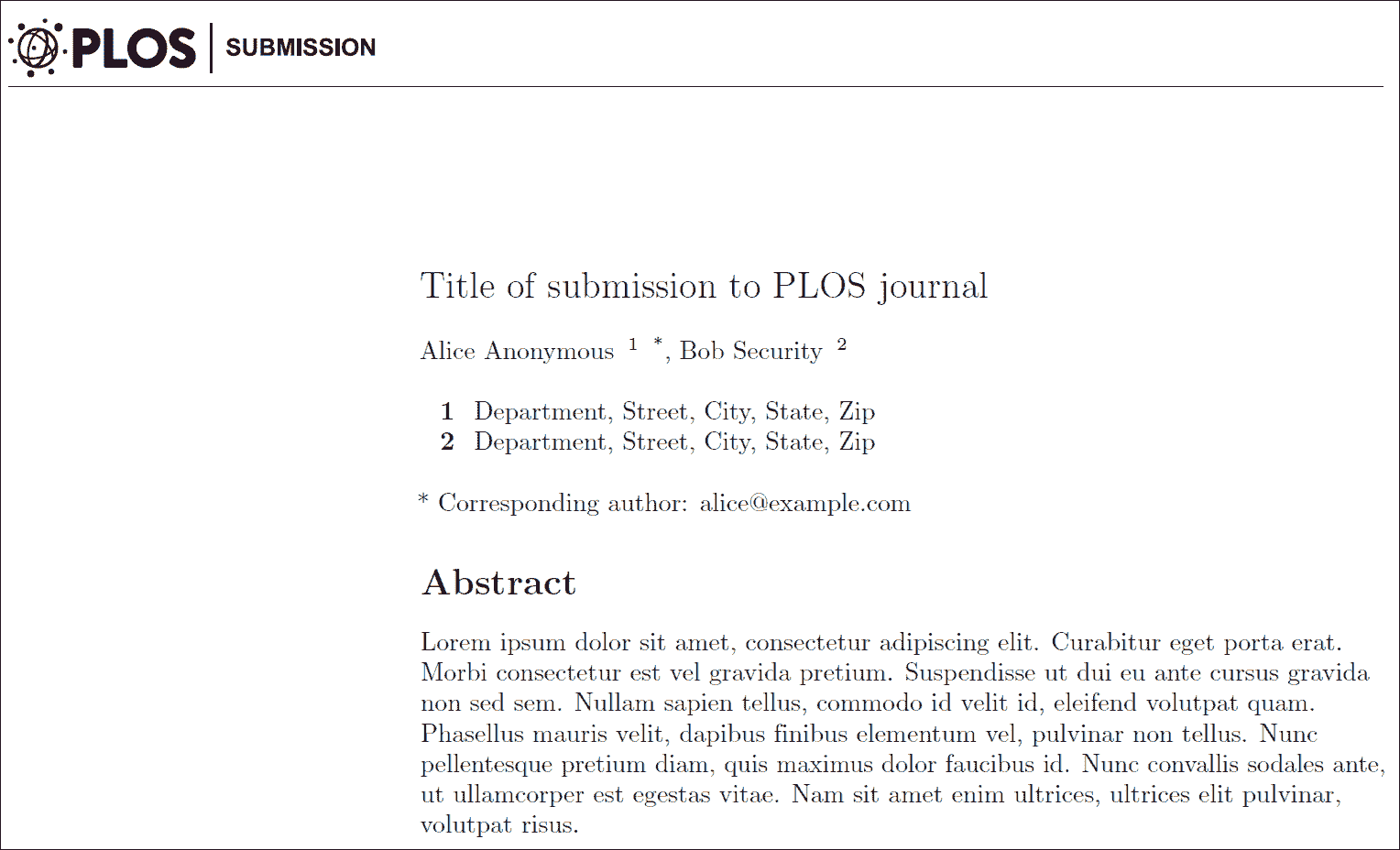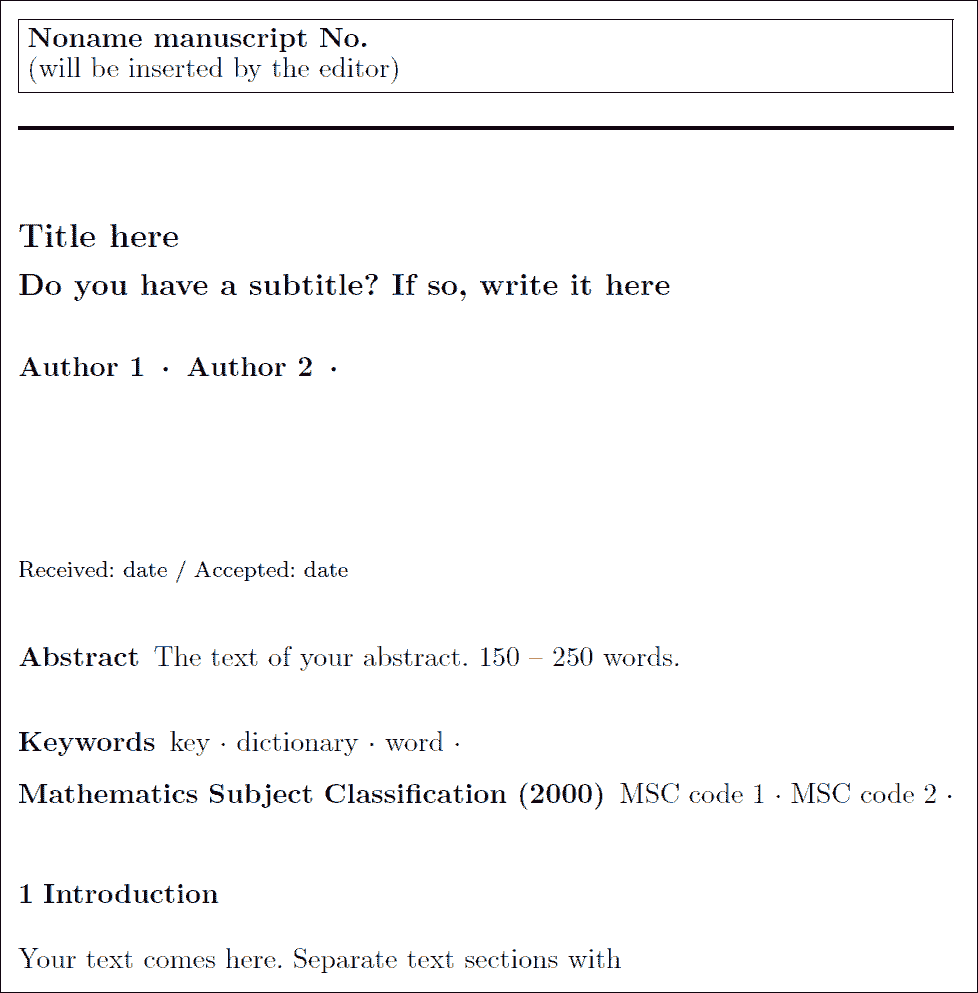Chapter 13 Journals
Academic journals often have strict guidelines on the formatting for submitted articles. As of today, few journals directly support R Markdown submissions, but many support the LaTeX format. While you can convert R Markdown to LaTeX (see Section 3.3), different journals have different typesetting requirements and LaTeX styles, and it may be slow and frustrating for all authors who want to use R Markdown to figure out the technical details about how to properly convert a paper based on R Markdown to a LaTeX document that meets the journal requirements.
The rticles package (J. Allaire, Xie, R Foundation, et al. 2020) is designed to simplify the creation of documents that conform to submission standards. A suite of custom R Markdown templates for popular journals is provided by the package such as those shown in Figure 13.2.


FIGURE 13.1: Two journal templates in the rticles package (PLOS and Springer).
Understanding of LaTeX is recommended, but not essential, to use this package. R Markdown templates may sometimes inevitably contain LaTeX code, but usually we can use the simpler Markdown and knitr syntax to produce elements like figures, tables, and math equations as explained in Chapter 2.
References
Allaire, JJ, Yihui Xie, R Foundation, Hadley Wickham, Journal of Statistical Software, Ramnath Vaidyanathan, Association for Computing Machinery, et al. 2020. Rticles: Article Formats for R Markdown. https://github.com/rstudio/rticles.